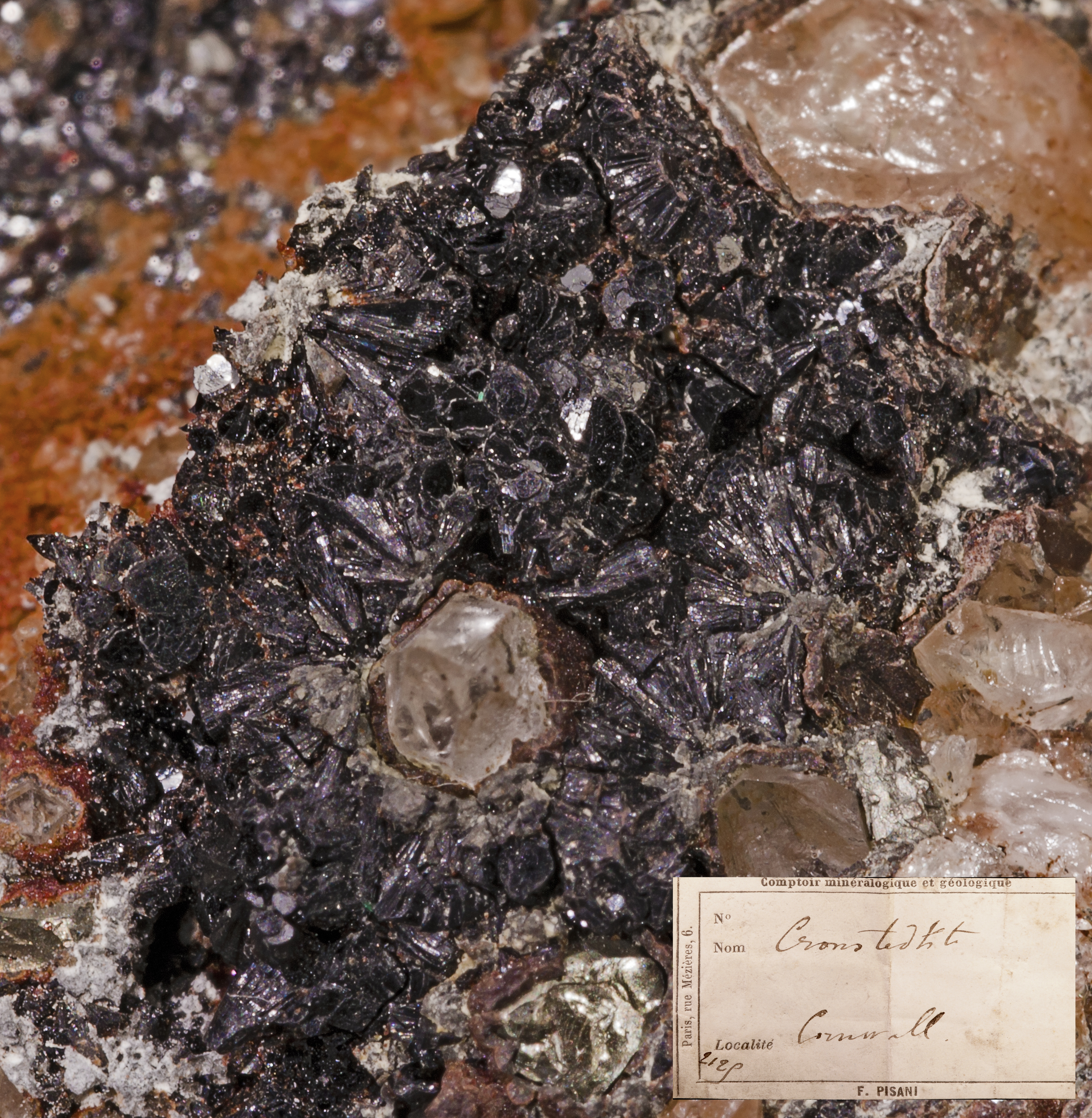cronstedtite on:
[Wikipedia]
[Google]
[Amazon]
Cronstedtite is a complex 
iron
Iron is a chemical element; it has symbol Fe () and atomic number 26. It is a metal that belongs to the first transition series and group 8 of the periodic table. It is, by mass, the most common element on Earth, forming much of Earth's o ...
silicate mineral
Silicate minerals are rock-forming minerals made up of silicate groups. They are the largest and most important class of minerals and make up approximately 90 percent of Earth's crust.
In mineralogy, the crystalline forms of silica (silicon dio ...
belonging to the serpentine group
Serpentine subgroup (part of the kaolinite-serpentine group in the category of phyllosilicates) are greenish, brownish, or spotted minerals commonly found in serpentinite. They are used as a source of magnesium and asbestos, and as decorativ ...
of minerals. Its chemical formula is .
It was discovered in 1821 and named in honor of Swedish mineralogist
Mineralogy is a subject of geology specializing in the scientific study of the chemistry, crystal structure, and physical (including optical mineralogy, optical) properties of minerals and mineralized artifact (archaeology), artifacts. Specific s ...
Axel Fredrik Cronstedt
Baron Axel Fredrik Cronstedt (''/kroonstet/'' 23 December 1722 – 19 August 1765) was a Sweden, Swedish Mineralogy, mineralogist and chemist who discovered the Chemical element, element nickel in 1751 as a mining expert with the Bureau of Mines. ...
(1722–1765). It has been found in Bohemia
Bohemia ( ; ; ) is the westernmost and largest historical region of the Czech Republic. In a narrow, geographic sense, it roughly encompasses the territories of present-day Czechia that fall within the Elbe River's drainage basin, but historic ...
in the Czech Republic
The Czech Republic, also known as Czechia, and historically known as Bohemia, is a landlocked country in Central Europe. The country is bordered by Austria to the south, Germany to the west, Poland to the northeast, and Slovakia to the south ...
and in Cornwall
Cornwall (; or ) is a Ceremonial counties of England, ceremonial county in South West England. It is also one of the Celtic nations and the homeland of the Cornish people. The county is bordered by the Atlantic Ocean to the north and west, ...
, England
England is a Countries of the United Kingdom, country that is part of the United Kingdom. It is located on the island of Great Britain, of which it covers about 62%, and List of islands of England, more than 100 smaller adjacent islands. It ...
.
Cronstedtite is a major constituent of CM chondrite
A chondrite is a stony (non-metallic) meteorite that has not been modified by either melting or planetary differentiation, differentiation of the parent body. They are formed when various types of dust and small grains in the early Solar Syste ...
s, a carbonaceous chondrite
Carbonaceous chondrites or C chondrites are a class of chondritic meteorites comprising at least 8 known groups and many ungrouped meteorites. They include some of the most primitive known meteorites. The C chondrites represent only a small propo ...
group exhibiting varying degrees of aqueous alteration. Cronstedtite abundance decreases with increasing alteration.Browning et al. (1996) Geochimica et Cosmochimica Acta

See also
*List of minerals
This is a list of minerals which have Wikipedia articles.
Minerals are distinguished by various chemical and physical properties. Differences in chemical composition and crystal structure distinguish the various ''species''. Within a mineral speci ...
*List of minerals named after people
This is a list of minerals named after people. The chemical composition of the mineral follows the name.
A
* Abelsonite: – American physicist Philip Hauge Abelson (1913–2004)
* Abswurmbachite: – German mineralogist Irmgard Abs-Wurmbac ...
References
Iron(II,III) minerals Serpentine group Trigonal minerals Minerals in space group 157 {{silicate-mineral-stub